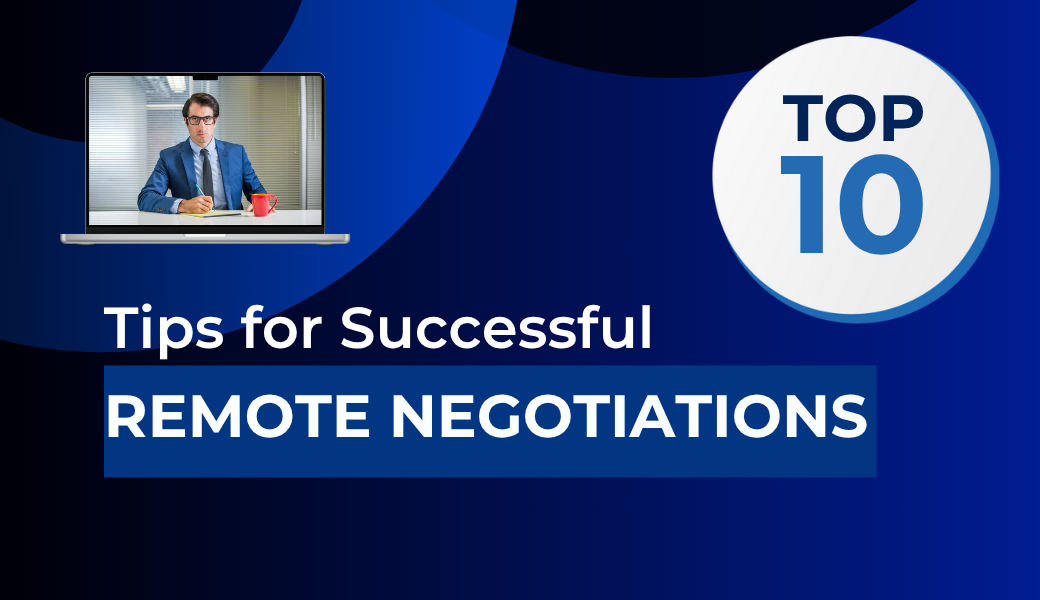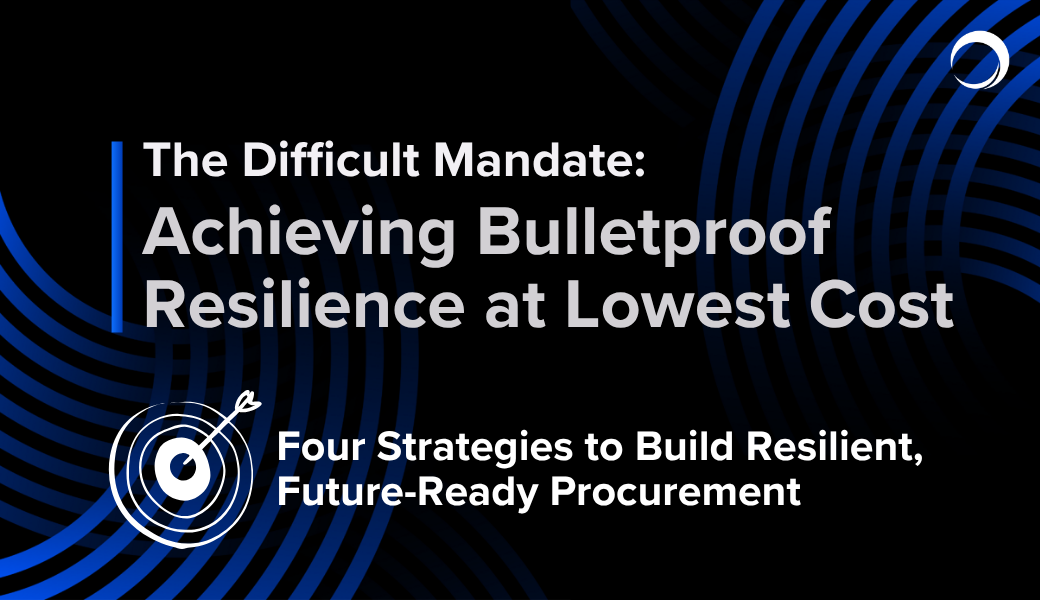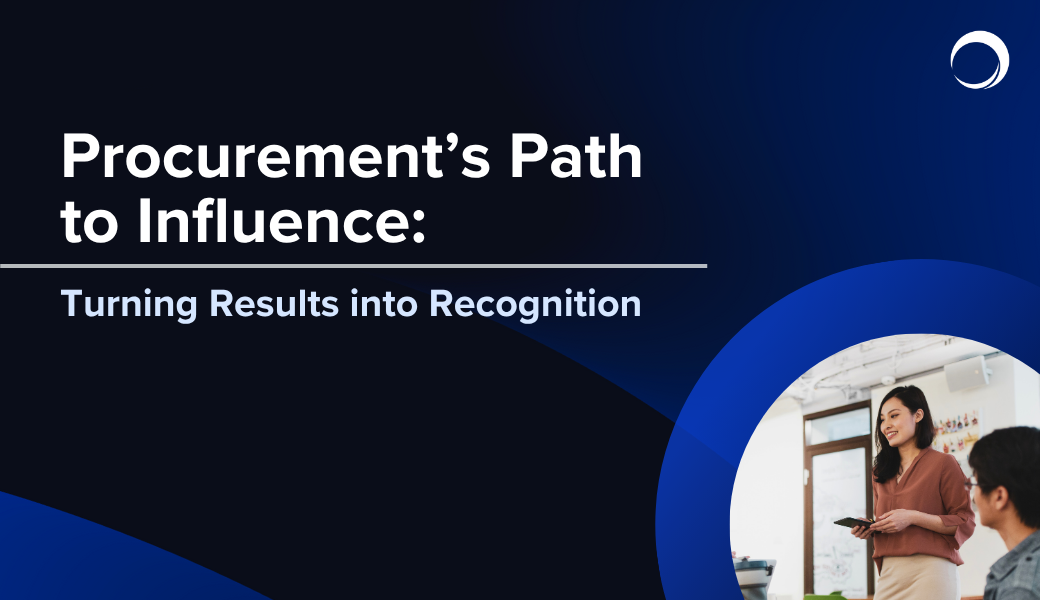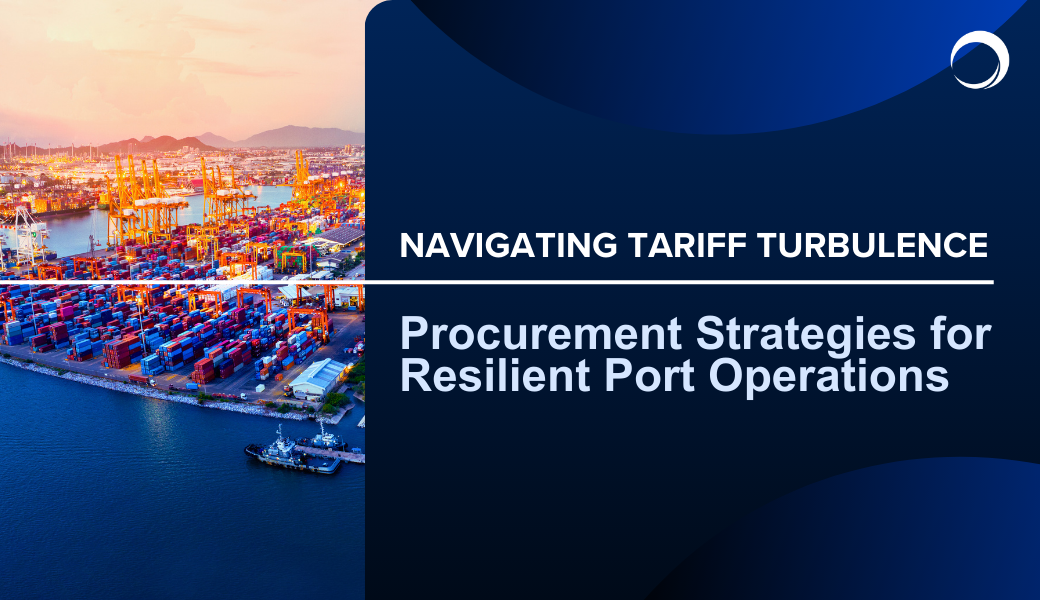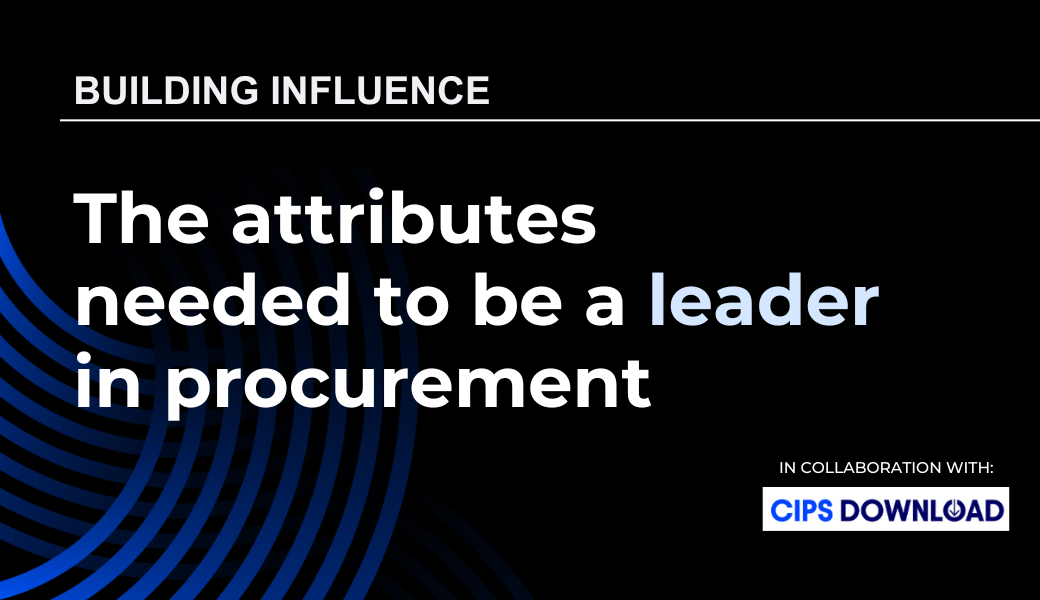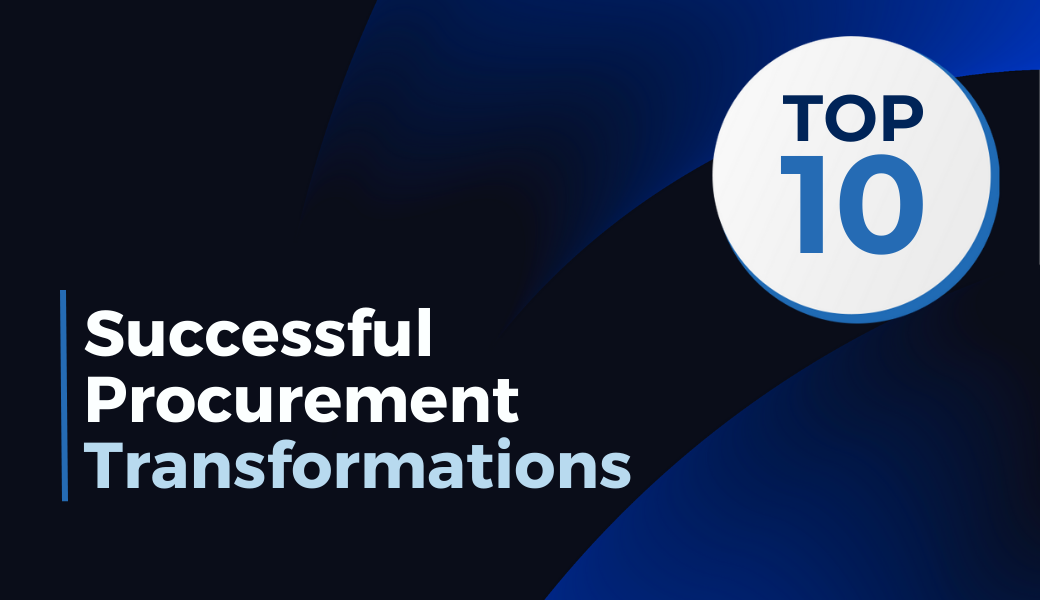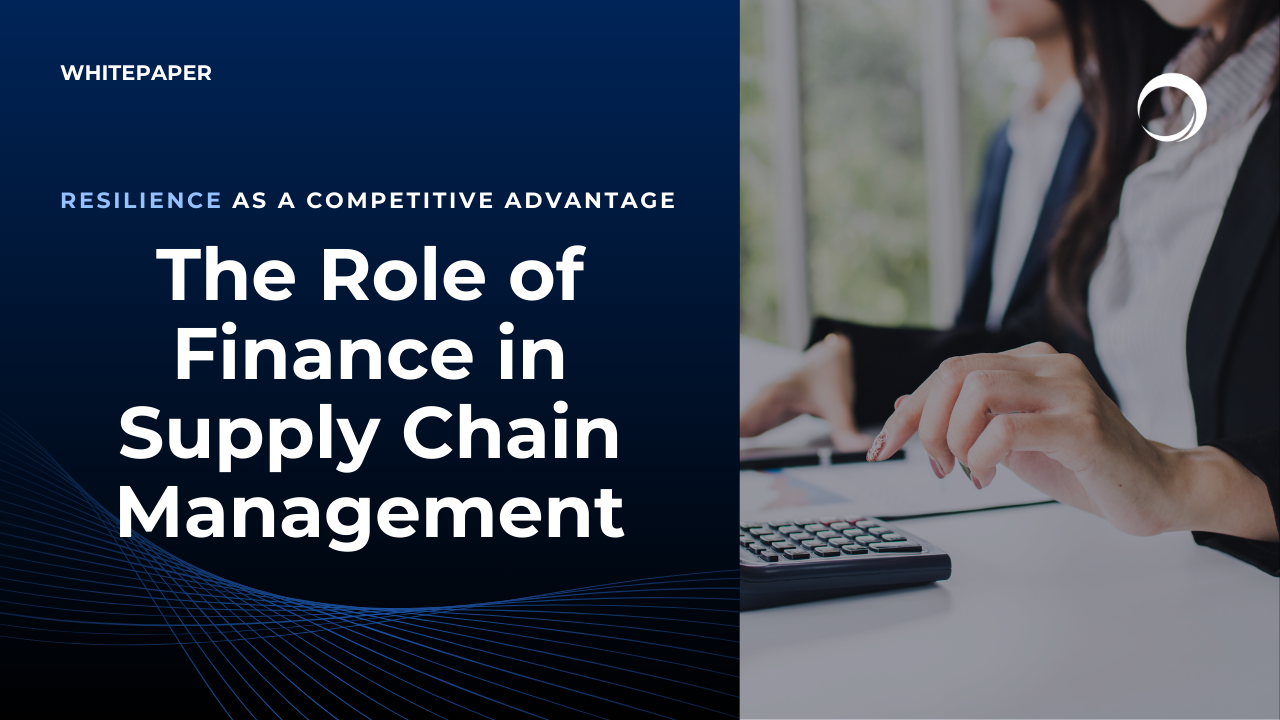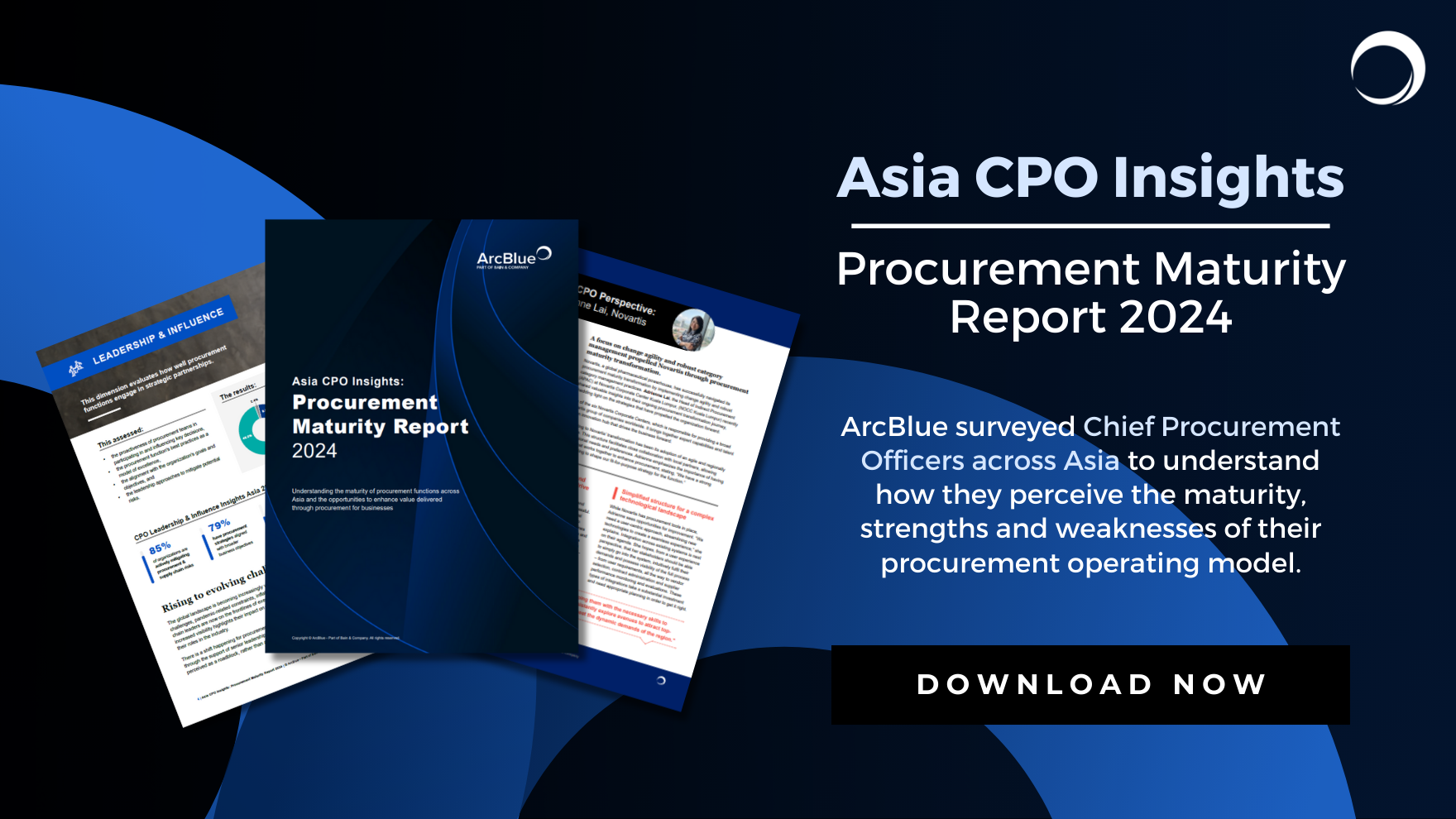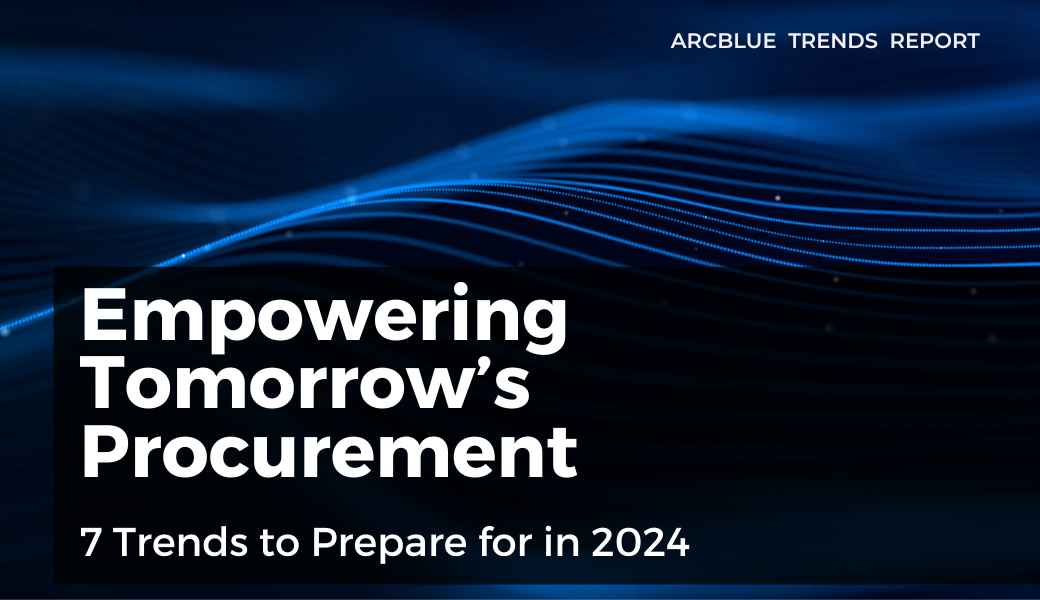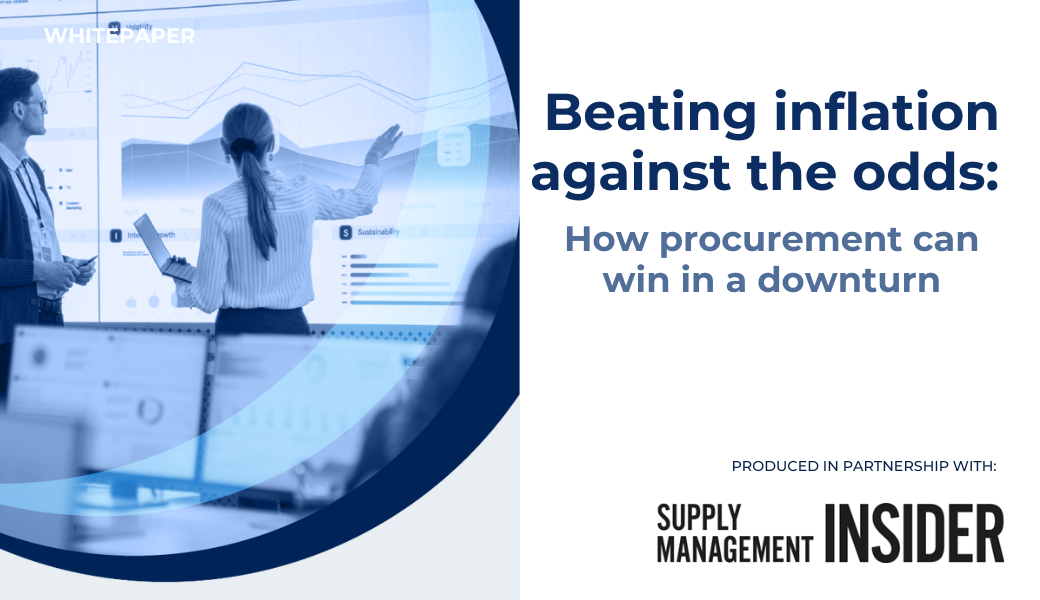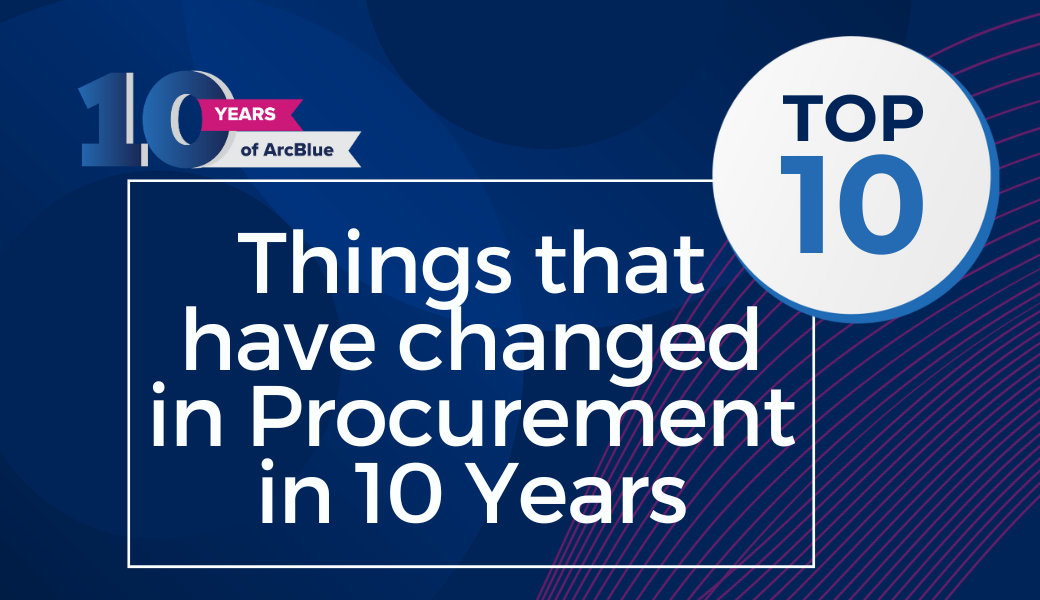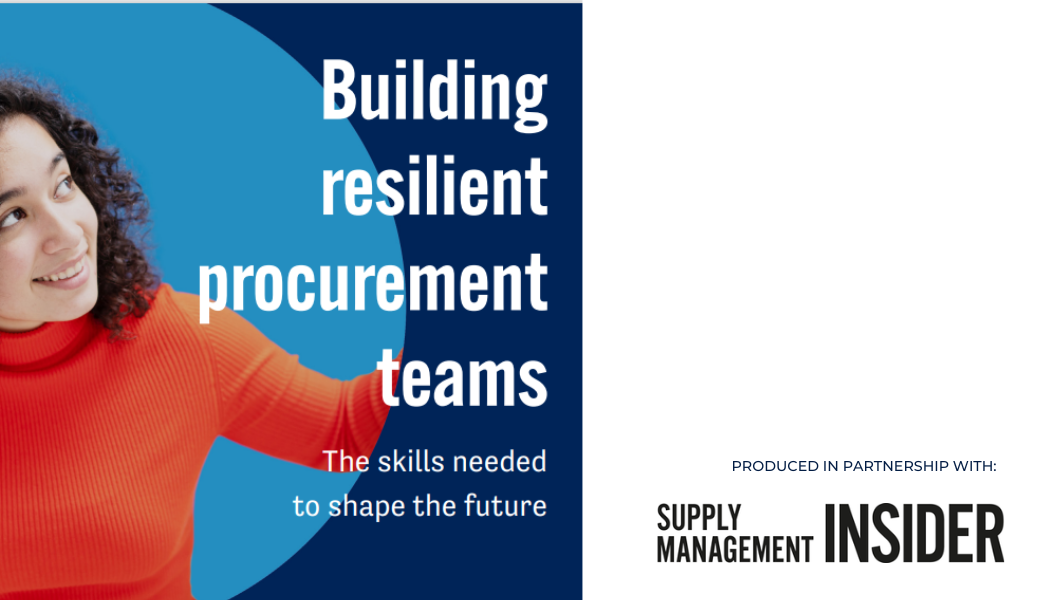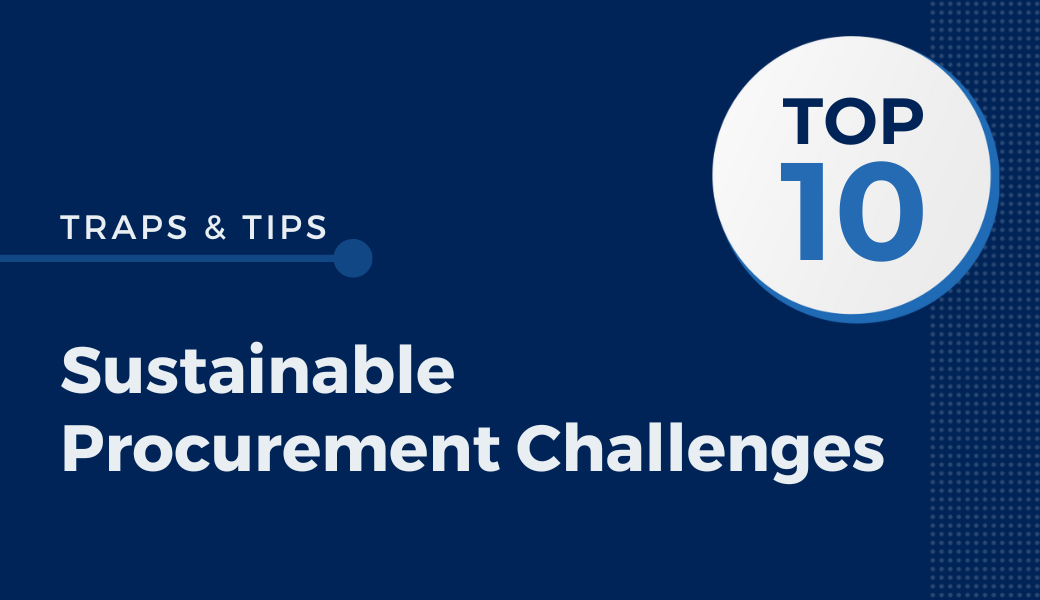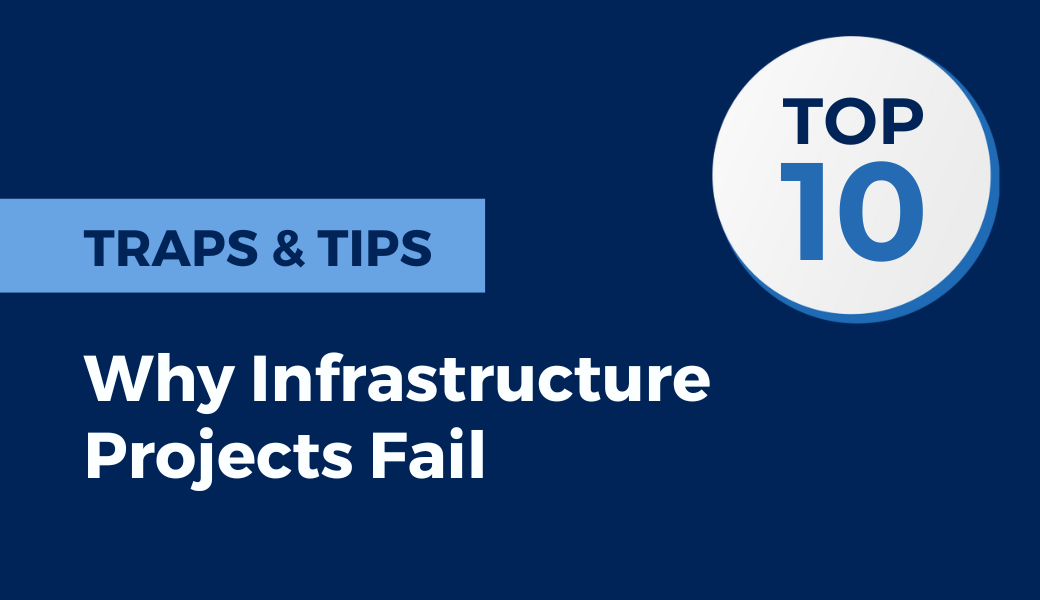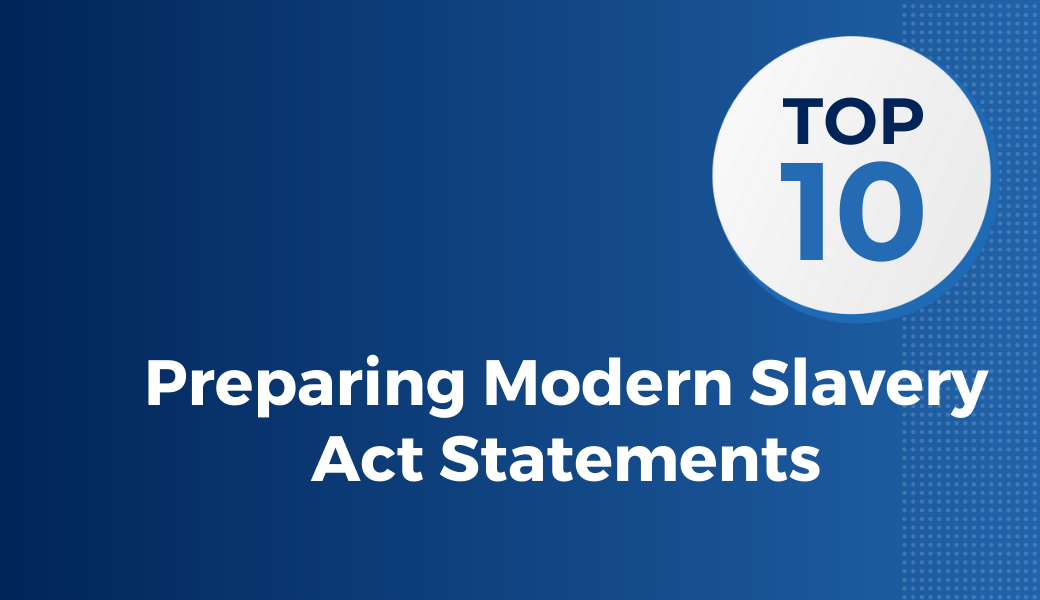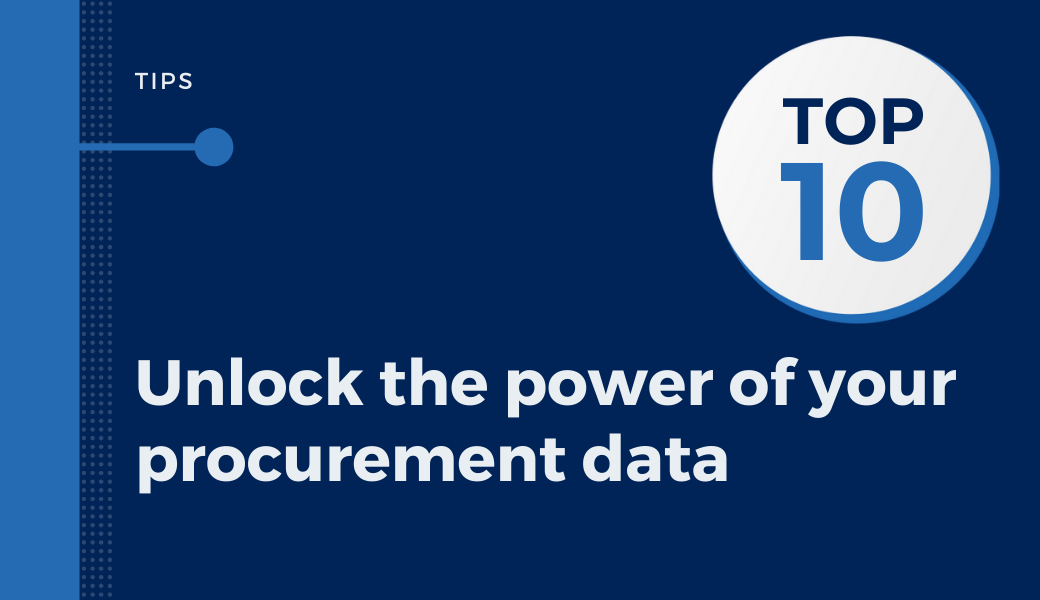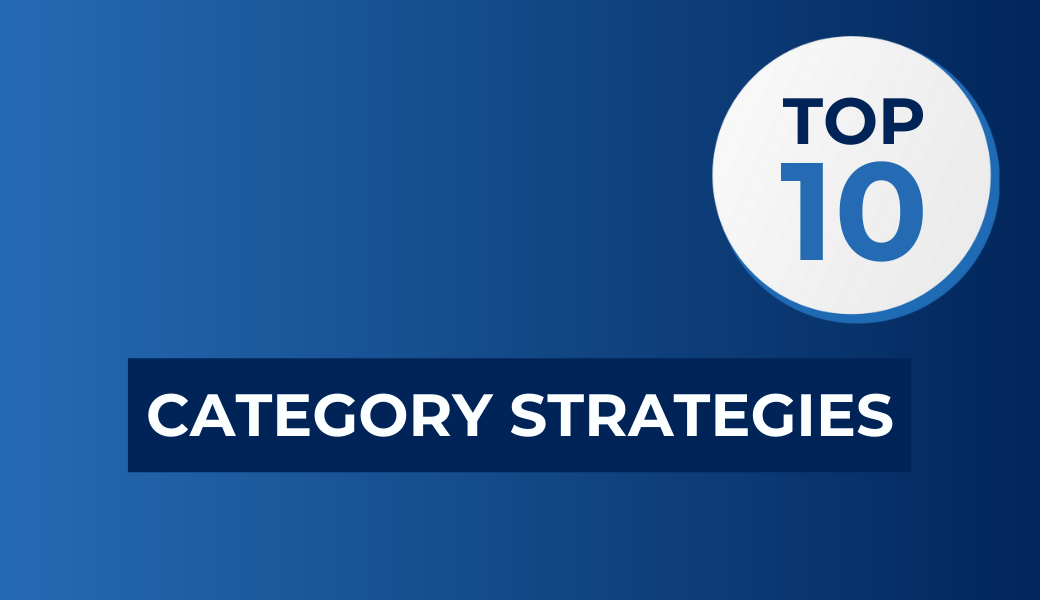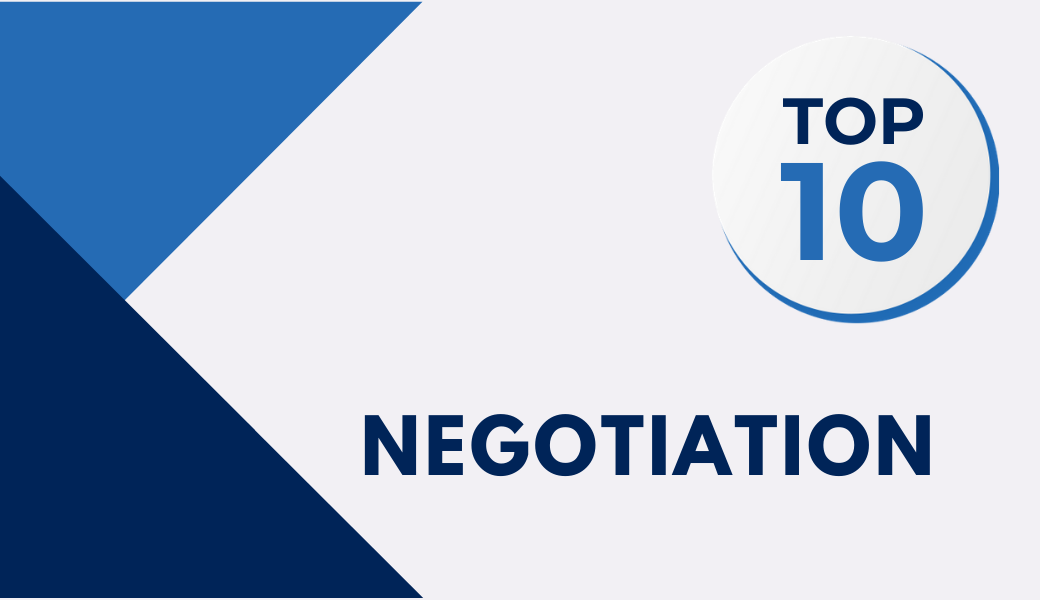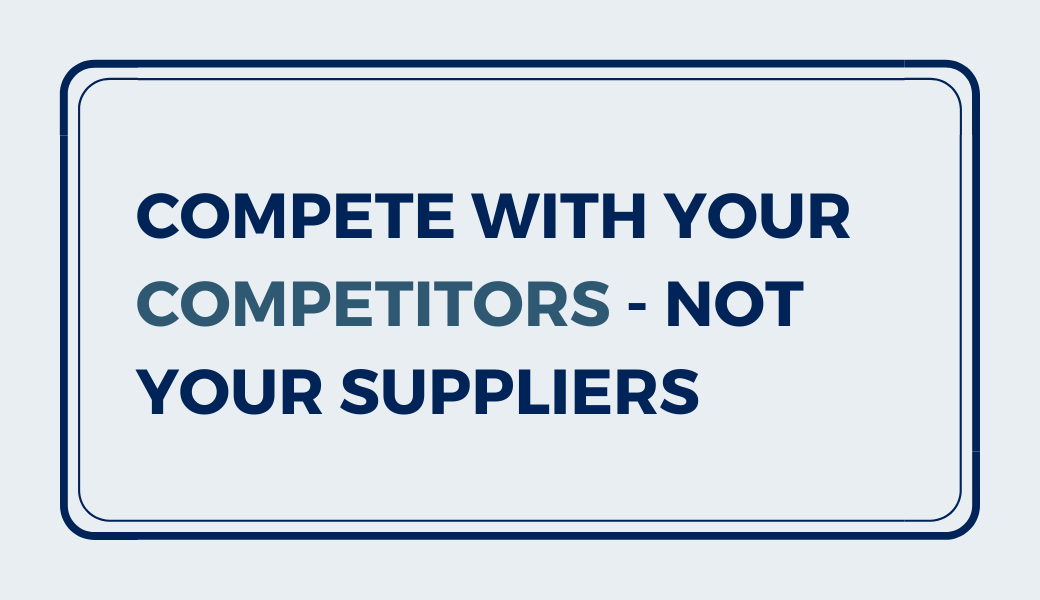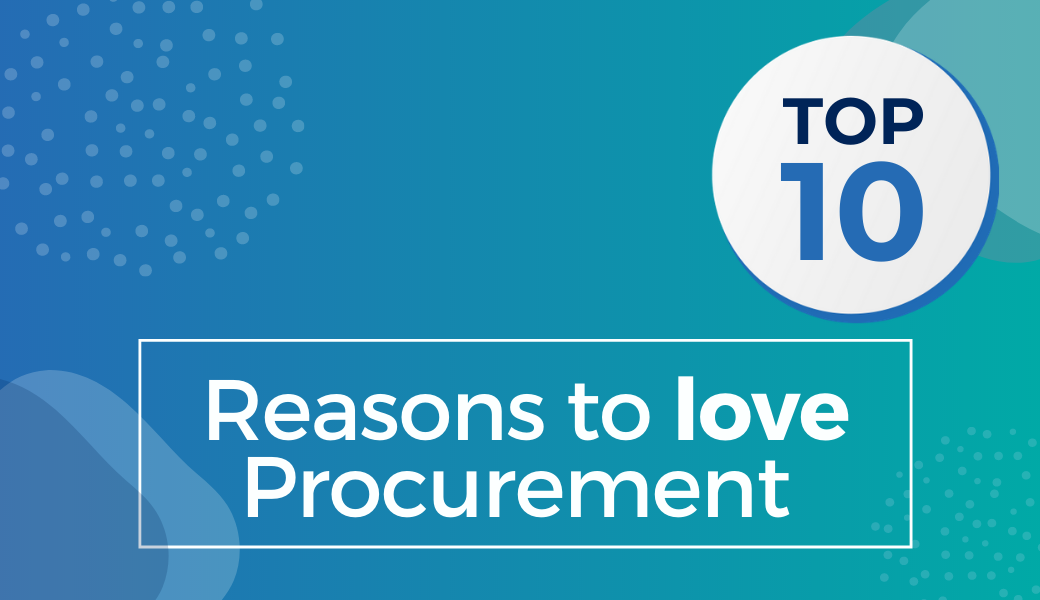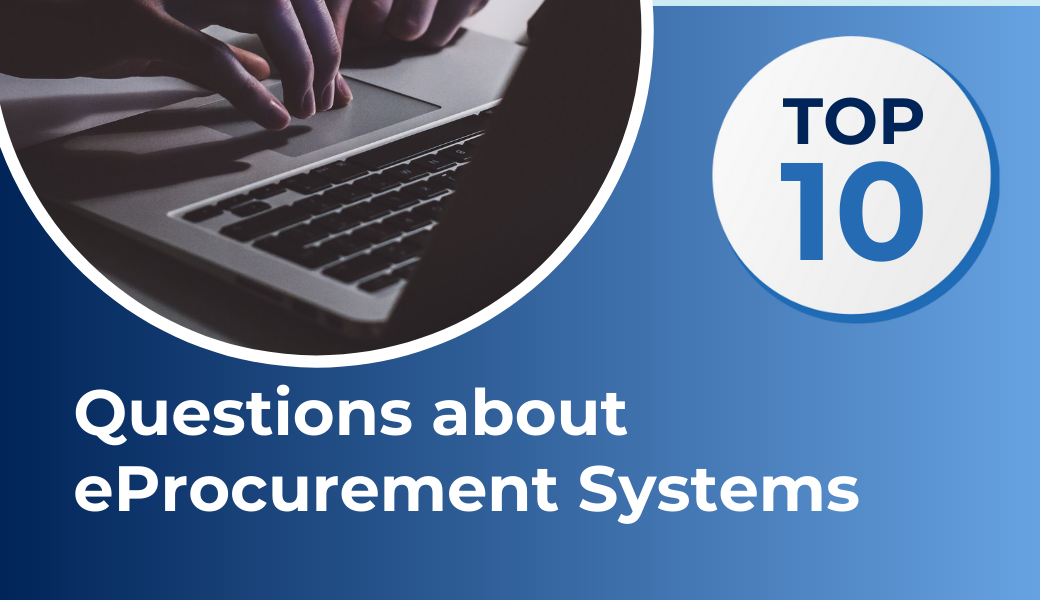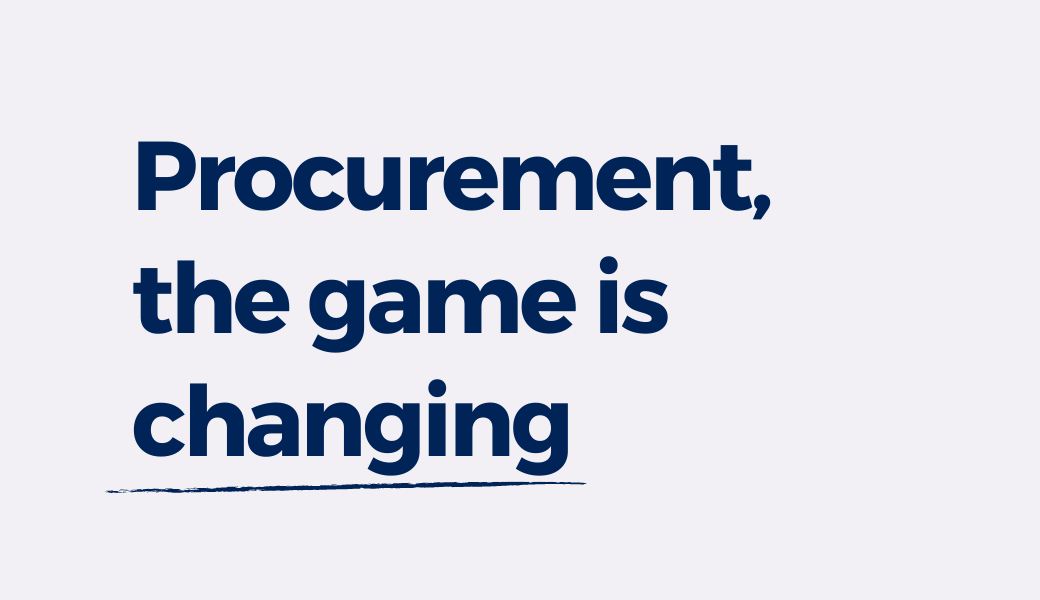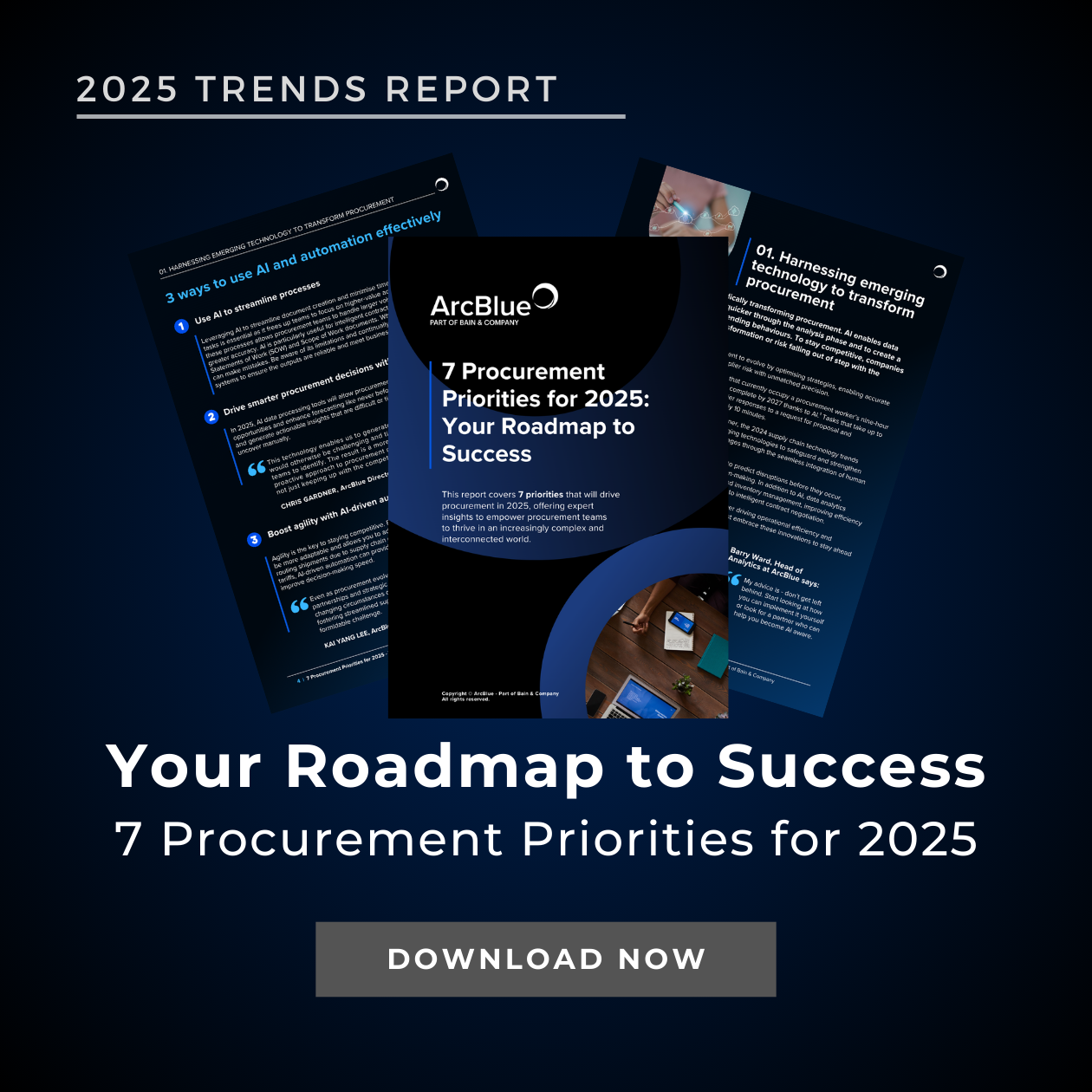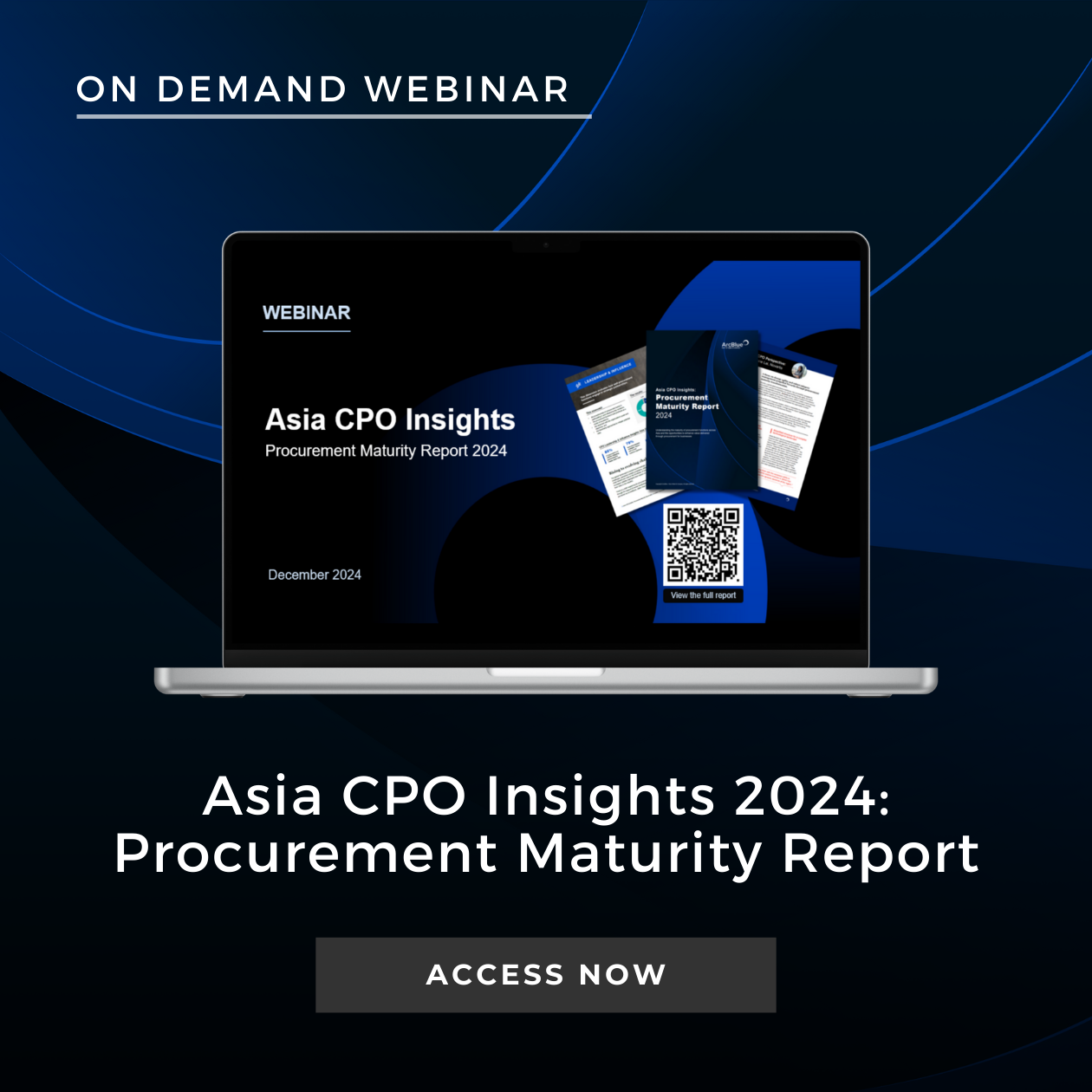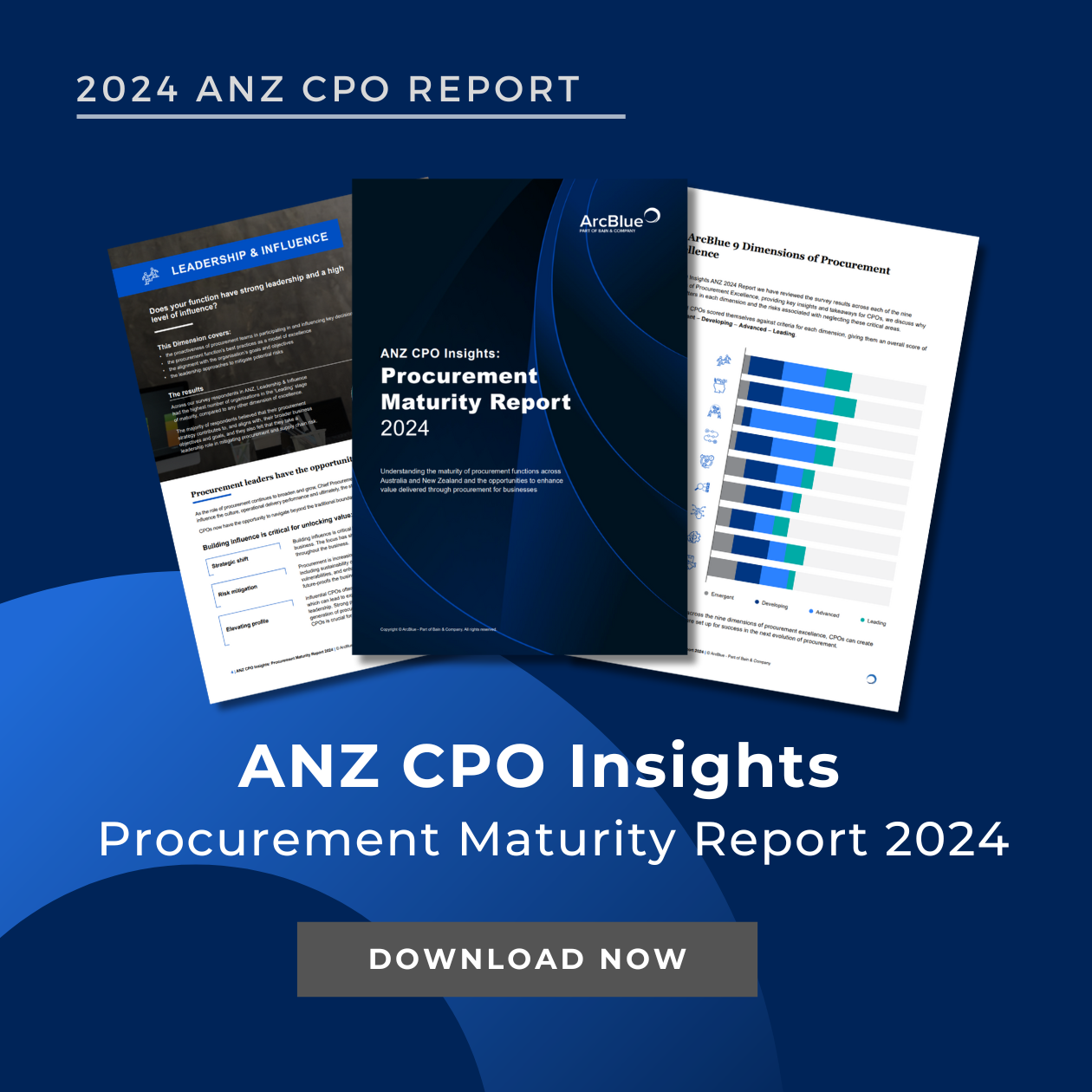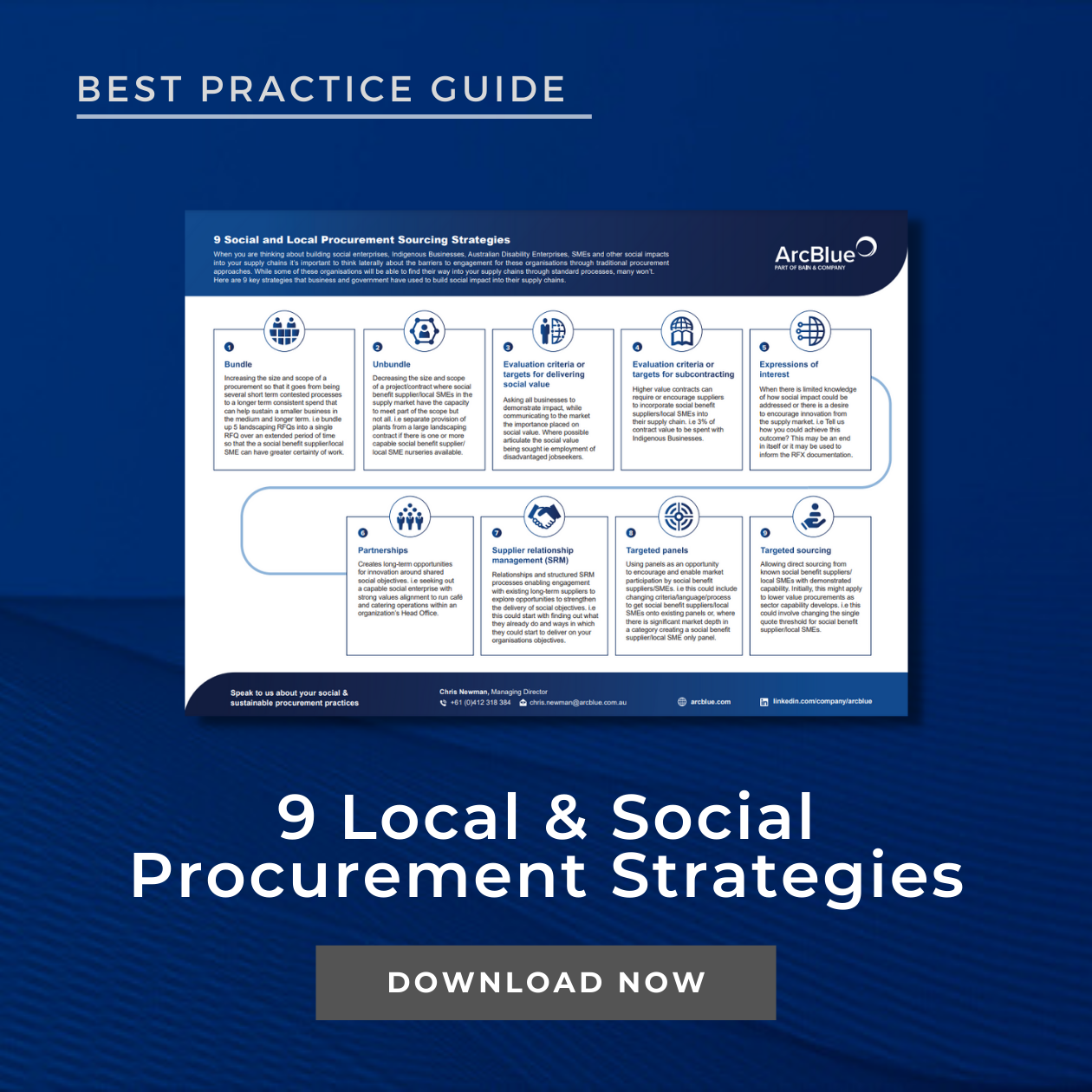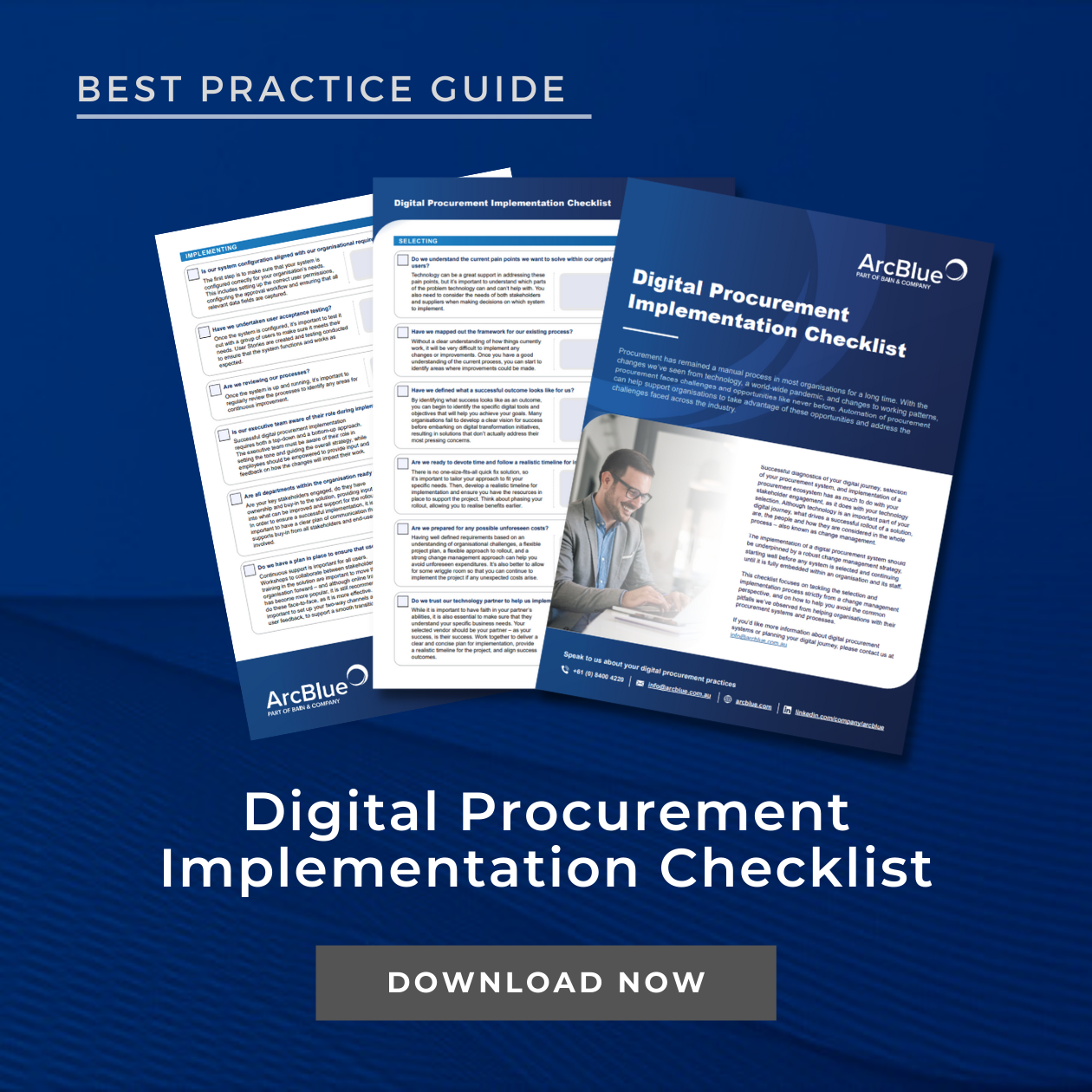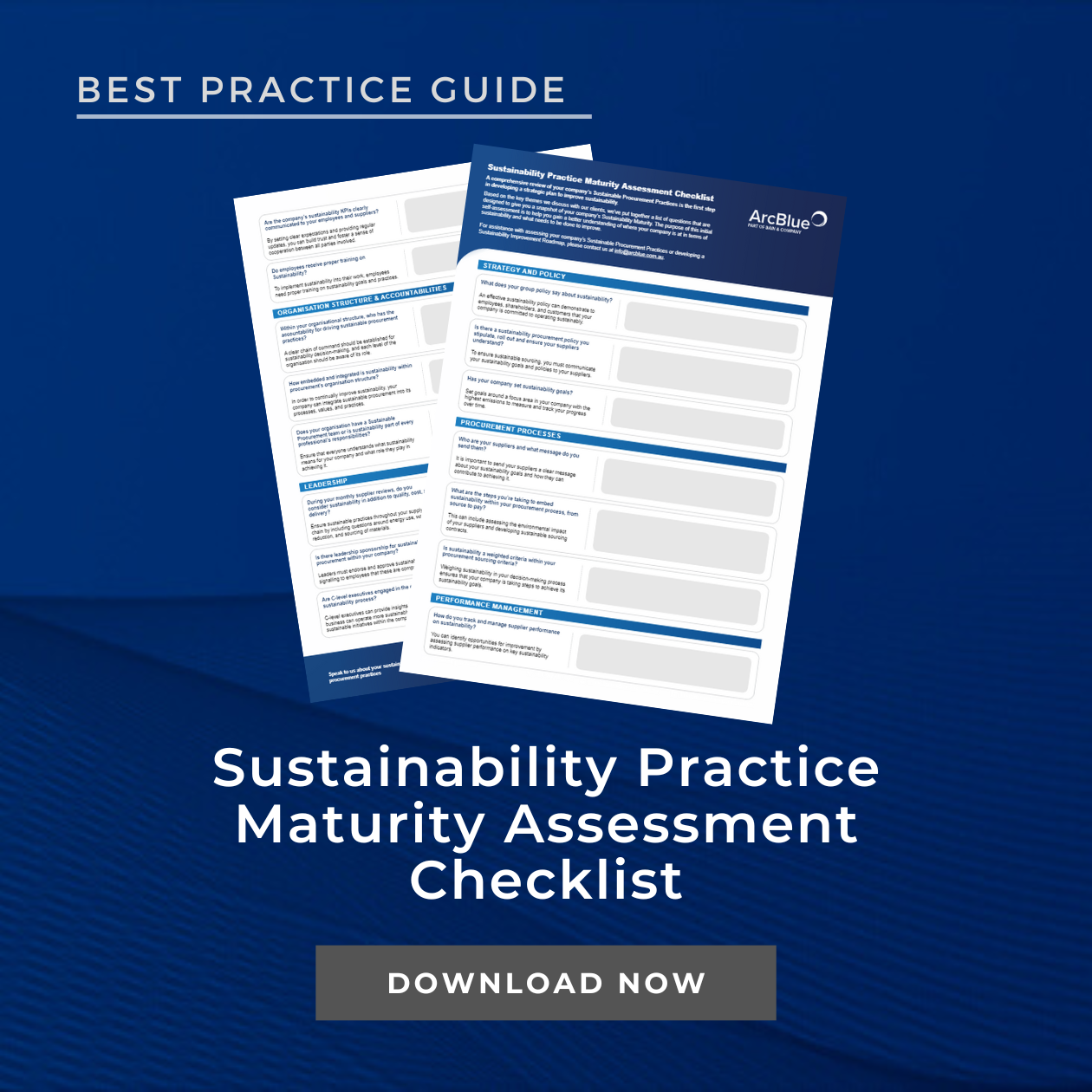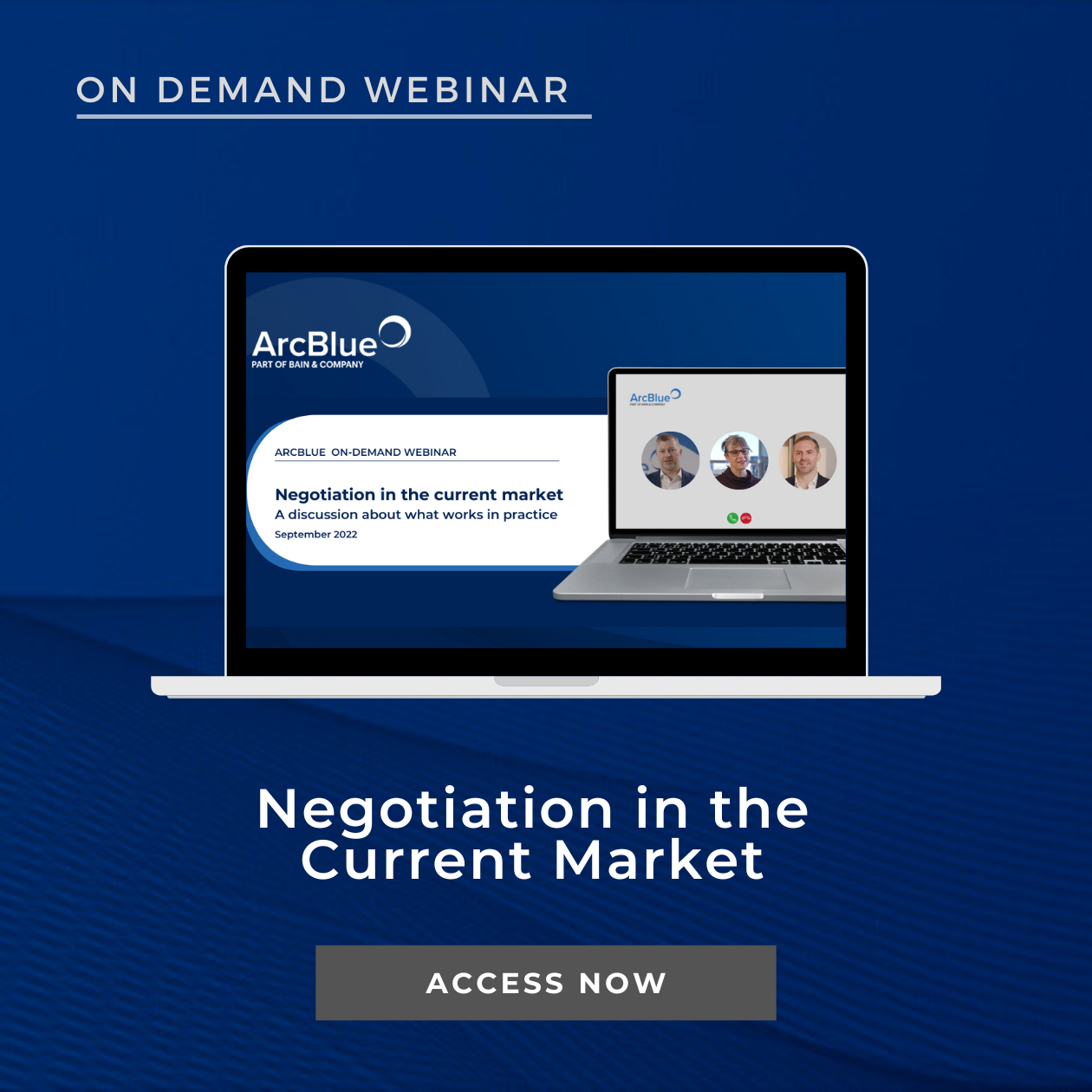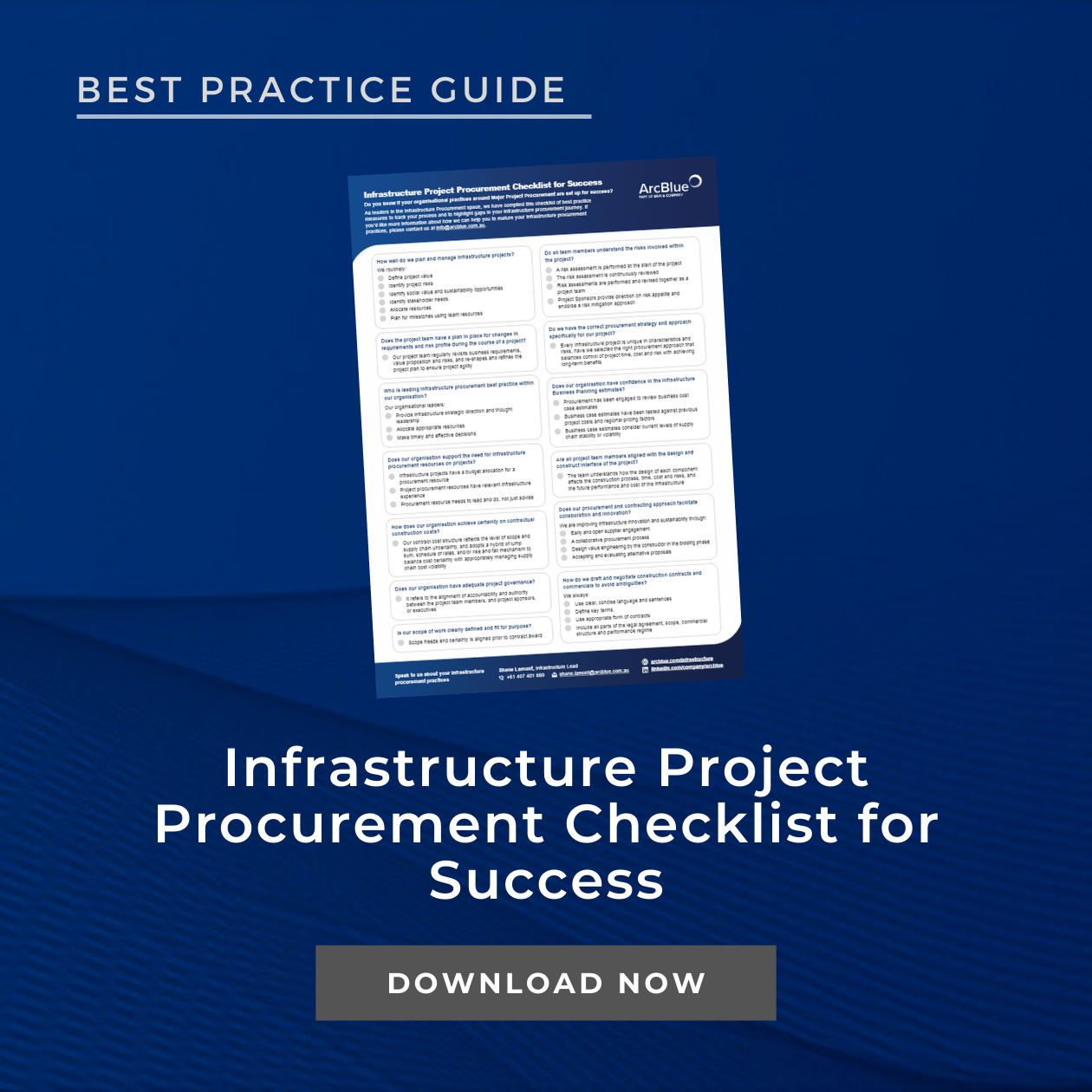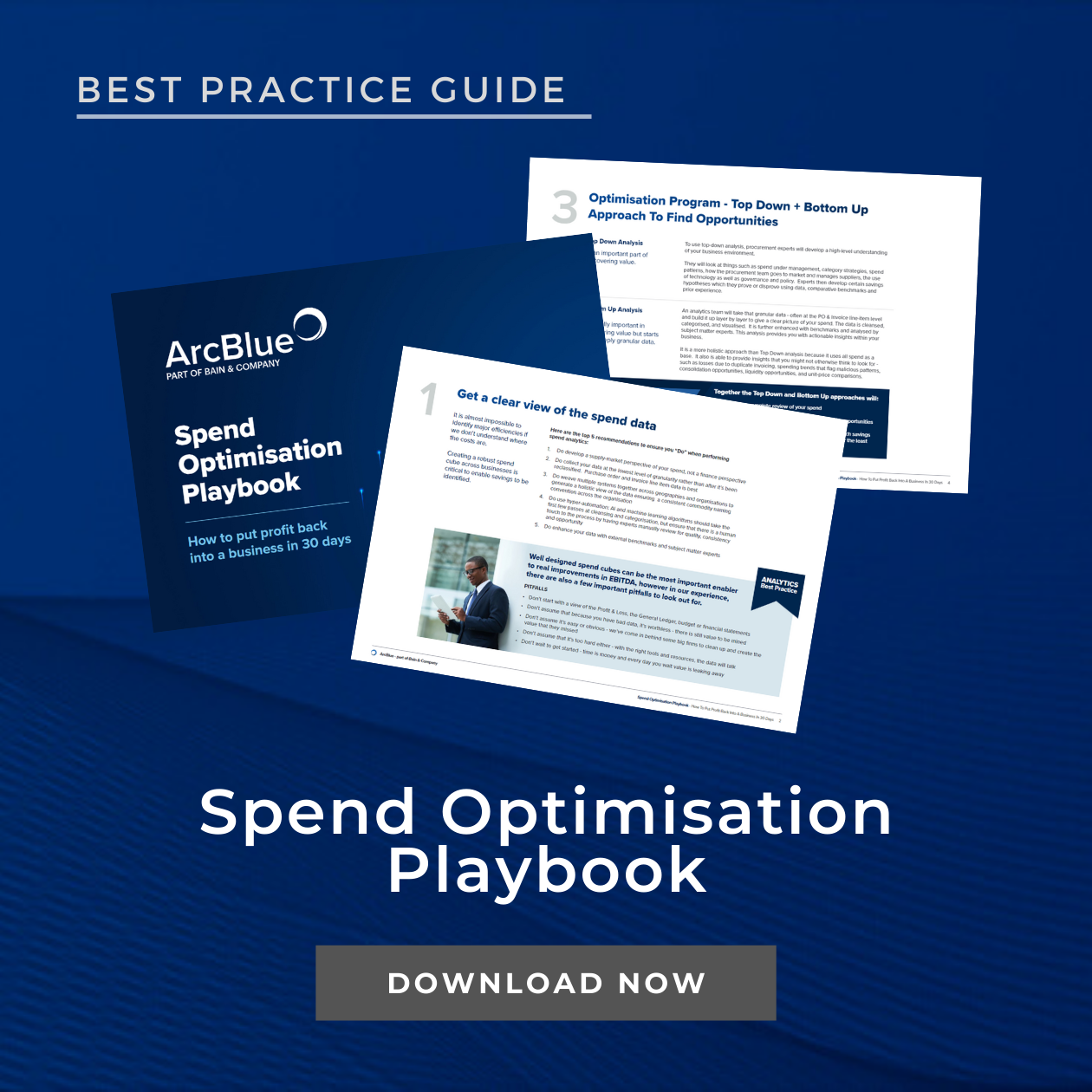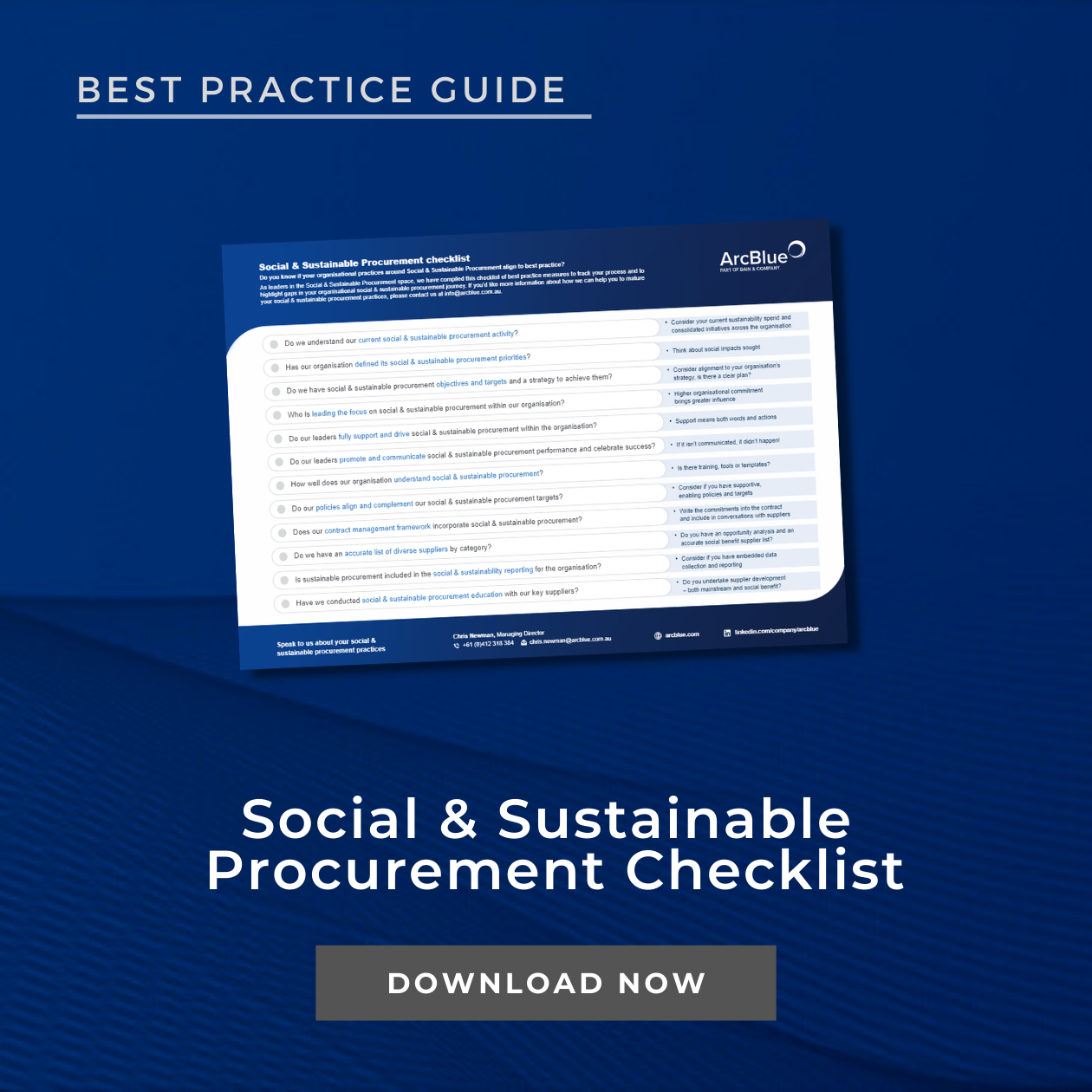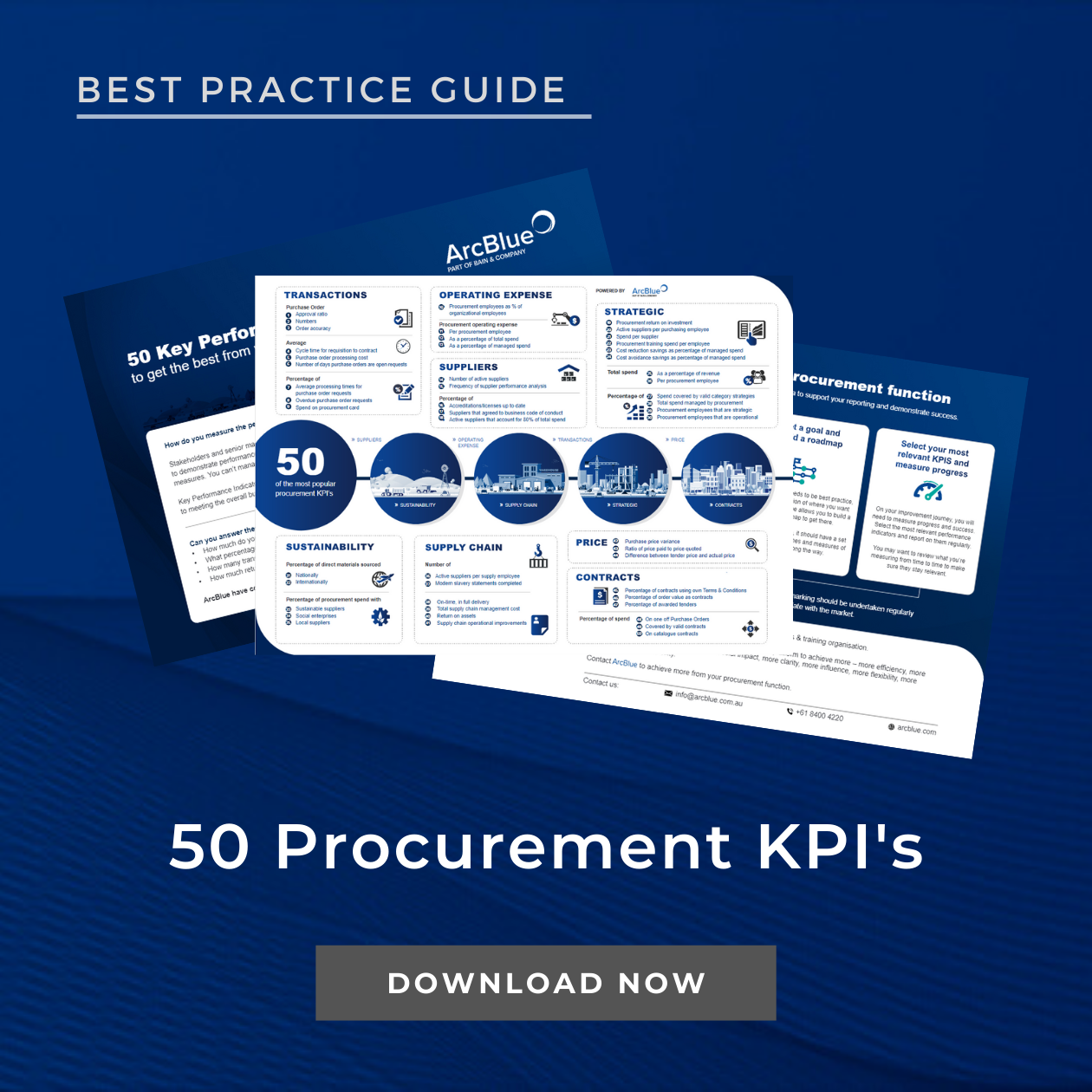- TOP 10 LIST
TOP 10:
Tips for Successful Procurement Transformations
June 2024
Many organisations we deal with are looking to develop the maturity of the procurement function as more and more senior management see the opportunity to deliver more value from their supply base.
As businesses increasingly recognize the potential to unlock greater value from their supply chains, many are embarking on journeys to enhance the maturity of their procurement functions. In this edition of our top 10 series, we delve into the critical factors that drive successful procurement transformations, yielding lasting benefits.
In this Top 10 list, we explore the key success factors of making transformations work and deliver lasting benefits.
Procurement organisations today are facing an ever-increasing number of challenges, from an increased risk profile as a result of global supply chain disruption, to expanding demands from leadership to deliver value beyond savings, snowballing digital evolutions and increased scrutiny on sustainability. All with the ever-present capability & capacity challenges.
We work with many organisations in the midst of complex procurement transformation programs, aiming to overhaul the function and address these challenges.
Successful procurement transformation programs are pivotal for organizations aiming to optimize costs, enhance efficiency, and drive innovation. However, that success relies on strategic planning and effective execution, the use of data and digital technologies, and adaptability to evolving market dynamics.
Here are our top 10 tips to help you navigate the intricate landscape of procurement transformation and ensure success:
1 Clearly define your goals
Define the objective of the program, with measurable goals along the way – aligned with your organisation’s overall strategy. Whether it’s reducing costs, enhancing supplier relationships, or improving compliance, clarity in objectives sets the direction for the transformation journey.
Be specific (remember your S.M.A.R.T goals!) and verify your assumptions to ensure the commitment you are making is challenging but also progressive.
2 Develop a comprehensive procurement roadmap
Once you know what you are aiming for, you’ll need to design the journey to get there – a simple time-based roadmap will allow the team to get on board and senior management to see progress. A useful Roadmap should include analysis of your current processes, areas for improvement, and your plan with goals, objectives, resources and support required and timeframes.
Keep your Roadmap visible and updated to encourage conversation, collaboration, and commitment.
3 Secure Leadership commitment
This is such an important piece of any procurement transformation! Procurement transformation requires genuine support from the leadership. Try and identify champions from the leadership team to communicate its importance across the organization and allocate necessary resources to ensure its success.
Integral to leadership commitment will be ensuring the goals of the procurement transformation align with the company’s strategy and ambition – beyond procurement goals. You’ll need to be able to communicate your vision for the transformation clearly and make the leaders feel invested in the journey by allowing them some decision-making responsibilities. Ensure you have an understanding of their concerns before you present your vision, and proactively address them, demonstrating you understand their challenges and motivations.
4 Foster stakeholder engagement
The transformation of procurement should be for the business, not just the procurement team. Involve key stakeholders from business units such as finance, operations, and IT early in the process. Their insights and buy-in are critical for identifying pain points, addressing challenges, and fostering collaboration throughout the transformation journey.
When sharing your vision for the future, remember to demonstrate the benefits and potential disruptions from their point of view, and make use of real-world examples to illustrate benefits.
5 Leverage data-driven insights
Harness the power of your spend data to gain deeper insights into procurement processes, supplier performance, and market trends – both ahead of your business case to leadership and throughout the transformation process. Leveraging data-driven decision-making will help you to identify opportunities for optimization and drive informed strategies.
Data analysis throughout the transformation process will help to keep you on track and give you a solid baseline to measure improvements against.
6 Use digital enablement to guide your stakeholders
Technology is often at the heart of a procurement change program as it can enable the implementation of your new operating model and processes. Bain & Company advise that “programs that span business units, regions, products, or functions need a shared tool to track progress and performance and ensure teams are accountable and leaders engaged.” So whether it’s e-sourcing platforms, contract management systems, or spend analytics tools, the right technology infrastructure is essential for driving efficiency and effectiveness.
Consider if a digital ecosystem approach may be a better fit than a new ERP for your organisation. This means looking at existing or smaller systems that can work together seamlessly to create a digital workspace, which may reduce time, risk and change fatigue over the course of your transformation.
7 Develop the capability of your team to suit the new operating environment
Developing procurement teams with the skills and capabilities needed in the new operating model is critical. Too many transformations fail due to the team not being aligned or being trained to step up to meet the requirements of the new model.
Learning programs to accompany the transformation should be customised to your needs. Training programs, coaching programs and continuous learning initiatives to enhance their expertise in technical procurement competencies such as strategic sourcing, contract management, and supplier negotiation can help shift the dial.
We often see procurement leaders looking to build ‘behavioural skills’ to help guide the business through a transformation processes, such as building sales skills for procurement professionals, storytelling and innovation and continuous improvement skills.
8 Build a compelling business case
The great thing about investing in procurement is that there is generally a compelling business case to support it. Ensure you include a commercial view – change programs can take time, money and resources so you need to be able to clearly showcase the benefits. By identifying benefits of the change and calculating the ROI, you can increase the likelihood of genuine buy in. Make sure you include input from your stakeholders.
Remember, a successful business case combines persuasive storytelling and facts to compel stakeholders to take action. It’s also important to make your business case user-friendly, both in structure and design, so that each stakeholder can easily digest it.
9 Get your suppliers on board
It’s hard for procurement to do much without its suppliers. Involving strategic suppliers in the program and operating with transparency and trust will allow ongoing value to be delivered.
By harnessing collaborative supplier relationships —including strategic supplier segmentation, meticulous performance assessments, and the integration of cutting-edge collaboration platforms – your suppliers can help you to achieve your transformation goals. Without supplier buy-in and assistance, transformation could be slow to progress.
10 Measure the results and communicate your success
It might sound strange but procurement needs to sell itself sometimes! Procurement delivers such value for the organisation but doesn’t always talk about it.
Having clear KPIs to track the progress and impact of the procurement transformation program and then communicating progress across the organization will build confidence and momentum.
Encourage feedback from stakeholders, benchmark against industry best practices, and stay abreast of emerging trends to then sustain long-term success.
Communicating and celebrating milestones achieved during the transformation journey is a great way to keep change-weary stakeholders engaged in the process, and able to see the light at the end of the tunnel.
Procurement transformation programs are not easy but hold the key to creating step change and unlocking significant value.
As Bain & Company state in their ‘Business Transformations that Work’ brief, “transformations are about continuously reshaping an organization. When they work, they enhance performance, increase efficiency, and create a competitive advantage.”
By following these top 10 strategies, organizations can navigate the complexities of procurement transformation with confidence, ensuring sustainable success in an ever-evolving business landscape.
Related Services
Drive strategic impact in your organisation with ArcBlue’s procurement Performance Improvement solutions.
Our team of experts have specialist expertise in a broad range of sectors & categories. We work alongside our clients to develop the people, processes, and systems necessary to deliver effective change.
INSIGHTS
RESOURCES & DOWNLOADS






